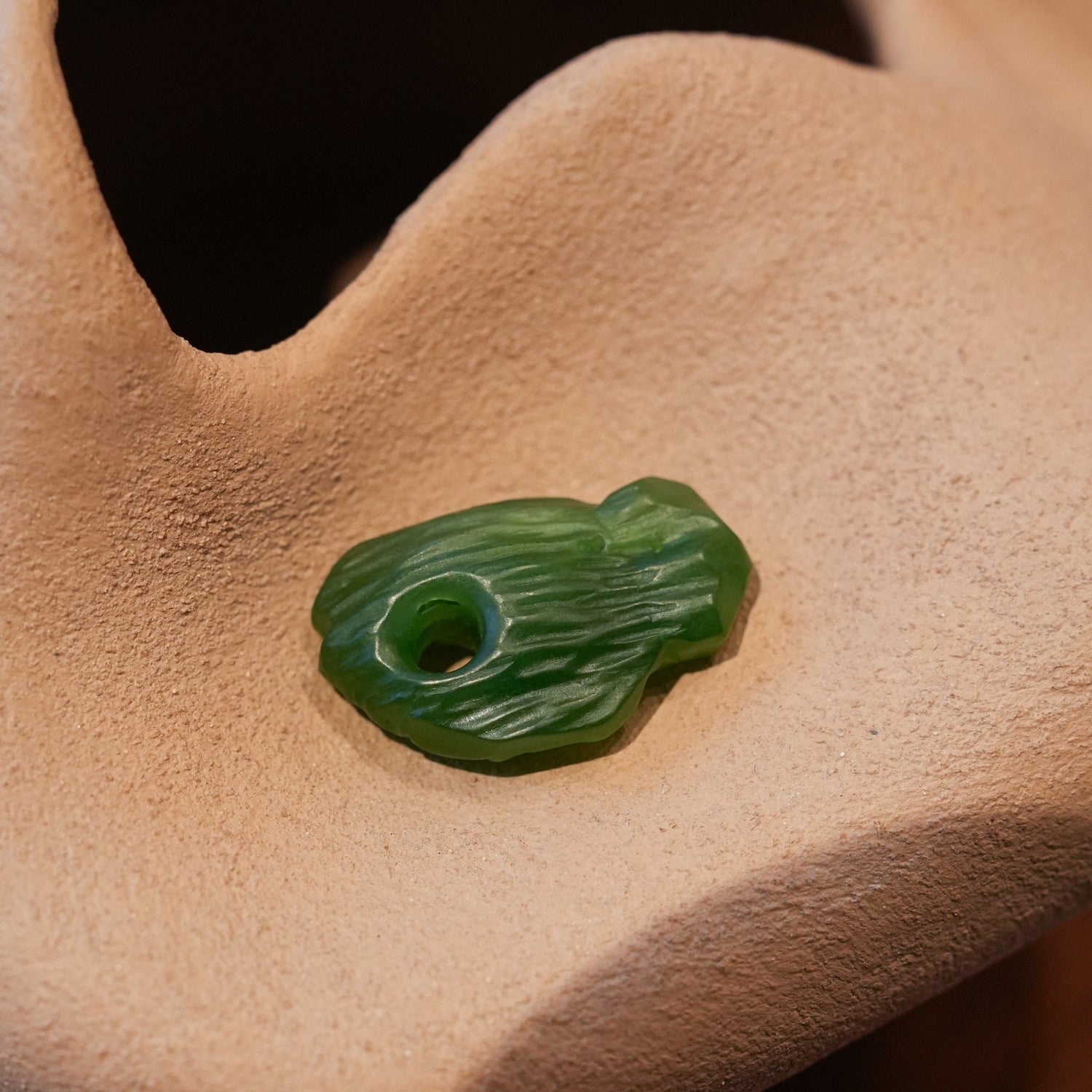What Is Real Jade?
Real jade refers to two different but visually similar minerals:
- Jadeite: A rare, high-quality gemstone known for its vivid green and other colors (mainly from Myanmar).
- Nephrite: A more common variety, often found in China (like Hetian jade), known for its creamy, softer colors and silky luster.
Both are naturally occurring minerals with strong cultural and commercial value.
What Is Dyed Quartzite?
Dyed quartzite is a type of natural stone (mostly composed of quartz) that is:
- Treated with dyes to mimic the look of jade
- Much cheaper and softer
- Often sold under names like "new jade," "Korean jade," or just “jade” without clarification
It’s technically not jade at all, it’s an imitation.
Key Differences: Real Jade vs. Dyed Quartzite
-
Material:
Real jade is a genuine mineral, either jadeite or nephrite, that forms naturally over millions of years. Dyed quartzite, on the other hand, is a quartz-based stone that has been artificially dyed to mimic the look of jade.
-
Color:
One of the most noticeable differences is in the color. Real jade displays natural variation, often with visible layers, subtle gradients, and unique patterns that reflect its geological formation. In contrast, dyed quartzite tends to have flat, overly uniform colors, and may appear unnaturally bright or consistent across the entire piece.
-
Luster:
Real jade has an oily or glassy glow that gives it a soft, almost glowing surface under light. Dyed quartzite typically appears dull, waxy, or dry, lacking the inner radiance of authentic jade.
-
Structure:
Genuine jade features a fibrous and dense internal structure with tightly interlocked grains, giving it both strength and translucency. Dyed quartzite has a granular and coarse texture, which becomes especially obvious under magnification.
-
Touch and Weight:
When you hold real jade, it feels smooth, cold to the touch, and heavy for its size, a result of its high mineral density. Dyed quartzite usually feels lighter, warmer, and may even feel slightly chalky or porous on the surface.
-
Value:
True jade carries significant market value as well as deep cultural and spiritual significance, especially in East Asian traditions. Dyed quartzite, while affordable, holds little to no resale or cultural value and is considered more of a decorative material than a true gemstone.
How to Identify Fake Jade (Dyed Quartzite)
1. Color Consistency
- Real jade often has slight color variations and natural-looking veins or "color roots".
- Dyed quartzite usually has flat, overly consistent color. Look for color concentrated in cracks - a sign of dye absorption.
2. Light Test (Translucency)
- Hold the stone up to a light source.
- Real jade tends to have a soft, glowing translucency.
- Dyed quartzite may appear opaque or cloudy, especially near the surface.
3. Surface Texture
- Real jade feels smooth, with a waxy or oily surface.
- Fake jade often feels rough, gritty, or plasticky.
4. UV Light Test
- Under ultraviolet (black) light, fake jade may glow bluish or green due to dye.
- Genuine jade will usually have no strong fluorescence.
5. Sound Test
- Tap it gently with another stone or piece of jade.
- Real jade emits a crisp, resonant sound.
- Dyed quartzite sounds dull or flat.
Price Difference
Real jade is significantly more expensive, with high-quality jadeite fetching thousands of dollars per piece. In contrast:
- Dyed quartzite is often sold for under $50.
- If the price seems too good to be true - it probably is fake.
Cultural and Investment Value
Real jade holds a deep and lasting place in many Asian cultures, particularly in Chinese tradition. It is more than just a gemstone, it symbolizes virtue, harmony, protection, and inner peace. For centuries, jade has been used in rituals, passed down as heirlooms, and worn as a talisman for good fortune and longevity. Its spiritual meaning is widely respected, and it is often believed to protect the wearer from harm and attract positive energy.
In contrast, fake jade, such as dyed quartzite, has no cultural or spiritual significance. It may resemble jade in appearance, but it lacks the rich history, symbolic weight, and emotional value that make real jade so meaningful. Fake jade is generally not collectible, and it holds little long-term value beyond temporary decorative use.
Quick Buyer’s Checklist
- Buy from reputable jewelers or certified sellers
- Ask for gemological certification (e.g., NGTC, GIA)
- Avoid "too-perfect" or super cheap jade items
- Learn the feel, color range, and weight of genuine jade
Conclusion
Real jade is more than just a pretty stone, it holds meaning, history, and lasting value. While dyed quartzite may look similar at first glance, it lacks the beauty, depth, and spirit of authentic jade.
Whether you're buying for personal use, gifting, or collecting, take the time to distinguish real jade vs fake jade. Understanding the difference will not only protect your wallet but also honor the centuries-old tradition that true jade represents.



